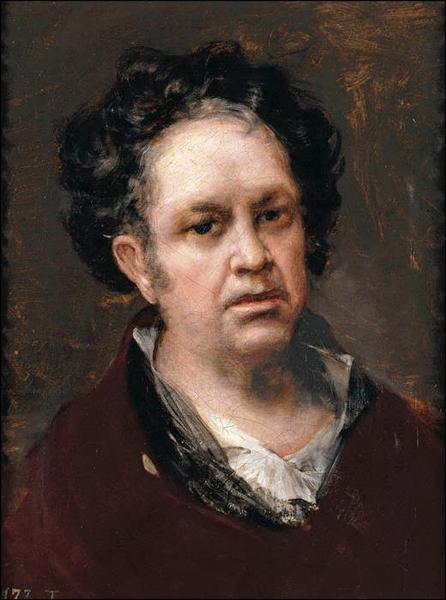Descriere
Francisco Goya's painting "Self-Portrait", painted in 1815, is a profound and personal testimony of the artist's psyche in a period of his life marked by introspection and reflection. Goya, considered one of the precursors of Romanticism and a bridge between Classicism and Modernity, represents himself in this work with an authenticity that resonates through time. In this self-portrait, Goya employs a palette of earthy and muted colors that accentuate the seriousness of his expression. The work is dominated by a dark background that highlights his figure, almost as if the background itself were absorbed by his presence.
The composition of the portrait is subtle but powerful. Goya presents himself facing the viewer's gaze, with a gesture that could be interpreted as defiant or contemplative. His gaze, intense and penetrating, conveys an air of introspection that invites contemplation of the artist's soul. This focus on the representation of his face and gaze is characteristic of Goya, who, throughout his career, used portraiture as a means not only to capture appearance, but also to explore the psychology of his subjects.
The use of light and shadow is also a crucial element in this work. Goya employs a chiaroscuro that shapes his face, creating a contrast that highlights the features of his countenance, revealing both the vulnerability and strength of the artist. This tonal treatment resembles his earlier work in the series of "Los caprichos" (The Caprichos), where he questioned human nature and morality, a theme that becomes more personal in this self-portrait.
It is interesting to note that by this time, Goya had already experienced significant hearing loss and had witnessed disturbing political and social events that impacted his worldview. These factors intertwine with his own image, making this self-portrait a reflection on loneliness and the tribulations of the individual in the face of a complex reality. Through this canvas, Goya not only portrays himself, but also captures the zeitgeist of a turbulent time in Spain, full of war, injustice and change.
Comparing this self-portrait with Goya's other works, such as The Third of May 1808 or The Family of Charles IV, reveals a common thread in his style: psychological realism and the ability to provoke an emotional response in the viewer. In Self-Portrait, Goya dispenses with the opulence and pomp that often characterized the portraits of the aristocracy of his time, replacing them with an approachable appearance but charged with significant symbolism.
Through "Self-Portrait - 1815", Goya offers us not only an image of himself, but a window into his interior, a mirror where pain, loss and resistance are reflected. His treatment of color and light adds depths of meaning that invite the viewer to dialogue not only with the work, but with the life of the artist himself. This self-portrait becomes a milestone in the history of art, where self-reflection is intertwined with technical mastery, leaving an indelible mark on the tradition of portraiture and art in general.
KUADROS ©, a famous painting on your wall.
Hand-made oil painting reproductions, with the quality of professional artists and the distinctive seal of KUADROS ©.
Painting reproduction service with satisfaction guarantee. If you are not completely satisfied with the replica of your painting, we will refund 100% of your money.

